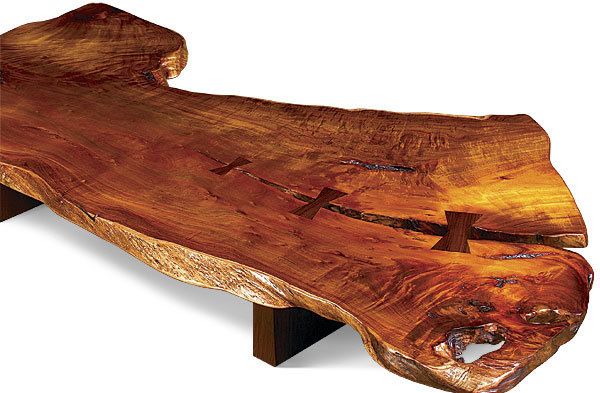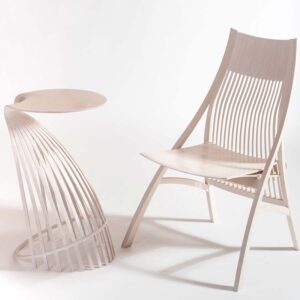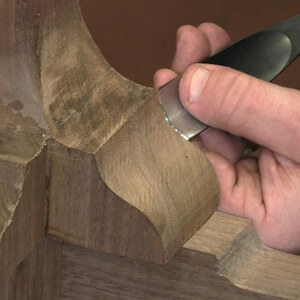Success With Large Slabs
From flattening to butterfly keys, how to handle one-of-a-kind pieces of wood
Synopsis: Chances are, you’re used to shaping wood to fit the project, whether you’re carving ball-and-claw feet or shaping molding on a router table. But when you work with a large slab, you have to turn that practice on its head. The slab shapes the project. The slab is the star. Turning these unique pieces of wood into furniture requires a special set of skills, from buying the slab to handling it safely to flattening it and shaping its edges.
From Fine Woodworking #206
Normally, when you build a piece of furniture, you shape the wood to fit the style—ball-and-claw feet, cove moldings, raised panels, and so on. But when you work with a slab, you have to shape your woodworking technique to fit the wood. The slab is the star, with all its seeming blemishes—swirly grain, knots, splits, and sapwood—adding to its character. You may think of a slab as a thick piece that’s very long or very wide, or both. Or, you may think that a slab must have a live edge. That’s not always true. A slab can be small (or smallish). It can have four sawn edges. It’s any piece of wood too big for your planer and jointer, with unique characteristics that you want to preserve and highlight, rather than remove or resaw away.
Like Hollywood stars, slabs can be temperamental and difficult to handle. Our furniture-making business builds period and contemporary designs. We’ve worked with plenty of slabs over the years, so we can show you how to make them behave.
You won’t find slabs at every lumberyard, so we’ll begin by talking about where and how to shop. Then we’ll explain how to move big pieces without injury, the best techniques for flattening slabs and cleaning up their edges, and how to deal with splits, checks, and wood movement.
Tips on buying slabs and moving them safely: If you’re lucky, you already have a big, interesting piece in your shop. If not, you can buy slabs from hardwood dealers on the Internet or from a local lumberyard or sawmill. Whatever the source, something about the slab should draw you to it: lively grain or figure, say, or an interesting combination of heartwood and sapwood, characteristics that give the slab its organic appeal.
In our experience, lots of companies sell great slabs. Even if you buy from a dealer miles away, you can ask for digital images of the slab, with closeups of the grain and any unique details. Shipping couldn’t be simpler. Chances are, the dealer will write your address directly on the slab and ship it bare. When shopping at a local dealer, bring a moisture meter and some water or mineral spirits to pour on the surface to reveal the grain. A small handplane also comes in handy to smooth a small area.
The slab needs to be dry when you buy it. If the wood continues to lose moisture when you bring it to your shop, it will check and split; other imperfections may worsen, too. Kiln-dried slabs have a moisture content of around 7.5%; in our experience, that will increase to around 11% if the wood is allowed to stabilize indoors; that’s the maximum moisture content you want.
For the full article, download the PDF below:
Fine Woodworking Recommended Products

Stanley Powerlock 16-ft. tape measure

DeWalt 735X Planer

Bessey EKH Trigger Clamps























Comments
It's ashamed there was no word of caution regarding the use of rosewood butterfly keys. When it comes to finishing you may have problems with urethane varnish if rosewood is not sealed properly. The anti-oxidants in rosewood may prevent curing polymerization. Since he states they use a lot or rosewood, some heads up would have been nice.
Log in or create an account to post a comment.
Sign up Log in